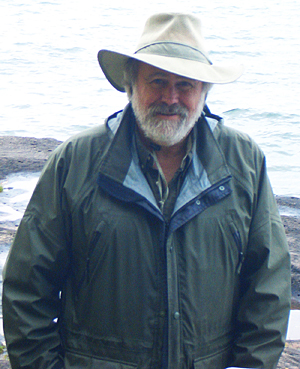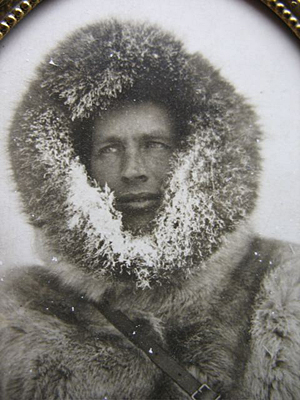

ADVERTISEMENT
- Rozovsky wins prestigious NSF Early Career Award
- UD students meet alumni, experience 'closing bell' at NYSE
- Newark Police seek assistance in identifying suspects in robbery
- Rivlin says bipartisan budget action, stronger budget rules key to reversing debt
- Stink bugs shouldn't pose problem until late summer
- Gao to honor Placido Domingo in Washington performance
- Adopt-A-Highway project keeps Lewes road clean
- WVUD's Radiothon fundraiser runs April 1-10
- W.D. Snodgrass Symposium to honor Pulitzer winner
- New guide helps cancer patients manage symptoms
- UD in the News, March 25, 2011
- For the Record, March 25, 2011
- Public opinion expert discusses world views of U.S. in Global Agenda series
- Congressional delegation, dean laud Center for Community Research and Service program
- Center for Political Communication sets symposium on politics, entertainment
- Students work to raise funds, awareness of domestic violence
- Equestrian team wins regional championship in Western riding
- Markell, Harker stress importance of agriculture to Delaware's economy
- Carol A. Ammon MBA Case Competition winners announced
- Prof presents blood-clotting studies at Gordon Research Conference
- Sexual Assault Awareness Month events, programs announced
- Stay connected with Sea Grant, CEOE e-newsletter
- A message to UD regarding the tragedy in Japan
- More News >>
- March 31-May 14: REP stages Neil Simon's 'The Good Doctor'
- April 2: Newark plans annual 'wine and dine'
- April 5: Expert perspective on U.S. health care
- April 5: Comedian Ace Guillen to visit Scrounge
- April 6, May 4: School of Nursing sponsors research lecture series
- April 6-May 4: Confucius Institute presents Chinese Film Series on Wednesdays
- April 6: IPCC's Pachauri to discuss sustainable development in DENIN Dialogue Series
- April 7: 'WVUDstock' radiothon concert announced
- April 8: English Language Institute presents 'Arts in Translation'
- April 9: Green and Healthy Living Expo planned at The Bob
- April 9: Center for Political Communication to host Onion editor
- April 10: Alumni Easter Egg-stravaganza planned
- April 11: CDS session to focus on visual assistive technologies
- April 12: T.J. Stiles to speak at UDLA annual dinner
- April 15, 16: Annual UD push lawnmower tune-up scheduled
- April 15, 16: Master Players series presents iMusic 4, China Magpie
- April 15, 16: Delaware Symphony, UD chorus to perform Mahler work
- April 18: Former NFL Coach Bill Cowher featured in UD Speaks
- April 21-24: Sesame Street Live brings Elmo and friends to The Bob
- April 30: Save the date for Ag Day 2011 at UD
- April 30: Symposium to consider 'Frontiers at the Chemistry-Biology Interface'
- April 30-May 1: Relay for Life set at Delaware Field House
- May 4: Delaware Membrane Protein Symposium announced
- May 5: Northwestern University's Leon Keer to deliver Kerr lecture
- May 7: Women's volleyball team to host second annual Spring Fling
- Through May 3: SPPA announces speakers for 10th annual lecture series
- Through May 4: Global Agenda sees U.S. through others' eyes; World Bank president to speak
- Through May 4: 'Research on Race, Ethnicity, Culture' topic of series
- Through May 9: Black American Studies announces lecture series
- Through May 11: 'Challenges in Jewish Culture' lecture series announced
- Through May 11: Area Studies research featured in speaker series
- Through June 5: 'Andy Warhol: Behind the Camera' on view in Old College Gallery
- Through July 15: 'Bodyscapes' on view at Mechanical Hall Gallery
- More What's Happening >>
- UD calendar >>
- Middle States evaluation team on campus April 5
- Phipps named HR Liaison of the Quarter
- Senior wins iPad for participating in assessment study
- April 19: Procurement Services schedules information sessions
- UD Bookstore announces spring break hours
- HealthyU Wellness Program encourages employees to 'Step into Spring'
- April 8-29: Faculty roundtable series considers student engagement
- GRE is changing; learn more at April 15 info session
- April 30: UD Evening with Blue Rocks set for employees
- Morris Library to be open 24/7 during final exams
- More Campus FYI >>
2:36 p.m., May 12, 2010----Frederick E. (“Fritz”) Nelson, professor of geography in the University of Delaware's College of Earth, Ocean, and Environment, has been elected to the board of governors of the Arctic Institute of North America (AINA).
The appointment not only highlights the University's continuing contributions to Arctic research and education, but also reveals important historic connections between the international institute, a past UD president who was a polar explorer, and Nelson himself.
AINA's mandate is “to advance the study of the North American and circumpolar Arctic through the natural and social sciences, the arts, and humanities, and to acquire, preserve, and disseminate information on physical, environmental, and social conditions in the North.”
As a member of AINA's board of governors, Nelson joins 29 other Arctic specialists in overseeing the multidisciplinary institute's international governance structure. The U.S. corporation currently is headquartered at the University of Alaska-Fairbanks, and its Canadian counterpart is at the University of Calgary.
The institute publishes the quarterly journal Arctic, as well as a monograph series, and maintains a large specialized library and archival collection at its Canadian headquarters in Calgary. It also maintains a field research station at Kluane Lake in Yukon Territory and operates a scholarship program in support of northern research by graduate students at North American colleges and universities.
Studying the institute's history, Nelson uncovered an important connection to UD. He learned that AINA traces its roots to a series of 1944 meetings in Montreal between Arctic specialists from the United States and Canada. The U.S. delegation to the first meeting was led by the commanding officer of the U.S. Army Air Forces' Arctic, Desert and Tropic Information Center (ADTIC), headquartered in New York City.
“This individual was none other than Col. William S. Carlson, who two years later would become president of the University of Delaware,” Nelson notes.
The 1944 meetings included several other ADTIC officers who subsequently became leaders in their respective fields of Arctic research, including Richard Foster Flint (later chair of the Department of Geology at Yale), glaciologist Laurence Gould (subsequently president of Carleton College), and permafrost scientist A. Lincoln Washburn (who would become AINA's first executive director).
Also in attendance were John K. Wright, director of the American Geographical Society (AGS), W.L.G. Joerg, the long-time resident AGS Arctic specialist and chief of the Cartographic Records Branch of the U.S. National Archives, and luminary Vilhjalmur Stefansson, “the grand old man of the Arctic,” whose expeditions early in the 20th century had demonstrated to an entire generation of polar explorers the superiority of indigenous subsistence techniques for extended travel in cold environments. An equally distinguished group of scientists and civil servants represented Canada at the organizational meetings, according to Nelson.
Reverberations from AINA's organizational meetings and their participants have been felt at UD over many decades, in ways that might be described as “unexpected,” Nelson notes.
Col. Carlson had been instrumental in creating an Arctic route by which long-range fighter aircraft could be transported safely to World War II's European theater, using stopover points in Newfoundland, Greenland, and Iceland. His interests in geography and the Arctic continued until his death in 1994.
“Carlson, who believed that geographical education was a necessary component of postwar university-level instruction, founded UD's Department of Geography by executive action in 1949 and oversaw the University's initial moves into the realm of polar research,” Nelson says. “The Department of Geography has maintained an emphasis on cryospheric research, much of it focused in the Arctic, to the present day.”
During 1955, AGS associate Sir Hubert Wilkins, first to fly by airplane across the Arctic Ocean in 1928 and first to attempt reaching the North Pole by submarine in 1931, was a visiting professor of geography at UD.
During 2008 and 2009, UD and AGS jointly sponsored the “William S. Carlson International Polar Year Events,” the University's primary contribution to the fourth International Polar Year. Organized by Nelson, who is also a councilor of AGS, the series was sponsored by all of UD's seven colleges.
A number of other unexpected associations continue, Nelson says. After AINA was established, its U.S. corporation was based for several years in the AGS building in New York City. AINA's offices there occupied part of the quarters of the AGS Department of Exploration and Field Research, chaired by glaciologist William O. Field. Nelson was the editor of a 1995 festschrift volume honoring Field.
Both Carlson and Nelson received doctorates in Arctic earth science from the University of Michigan, in departments founded by the eminent glaciologist William Herbert Hobbs. Both were elected to National Fellow status in the Explorers Club of New York City, Carlson in 1929 and Nelson in 2004.
Carlson grew up in Michigan's Upper Peninsula. Nelson, also a native of northern Michigan, was recently presented with the Distinguished Alumni Award from Northern Michigan University in Marquette. Nelson also is a member of the Intergovernmental Panel on Climate Change (IPCC), which shared the 2007 Nobel Prize for Peace with former U.S. Vice President Al Gore.
Article by Tracey Bryant


